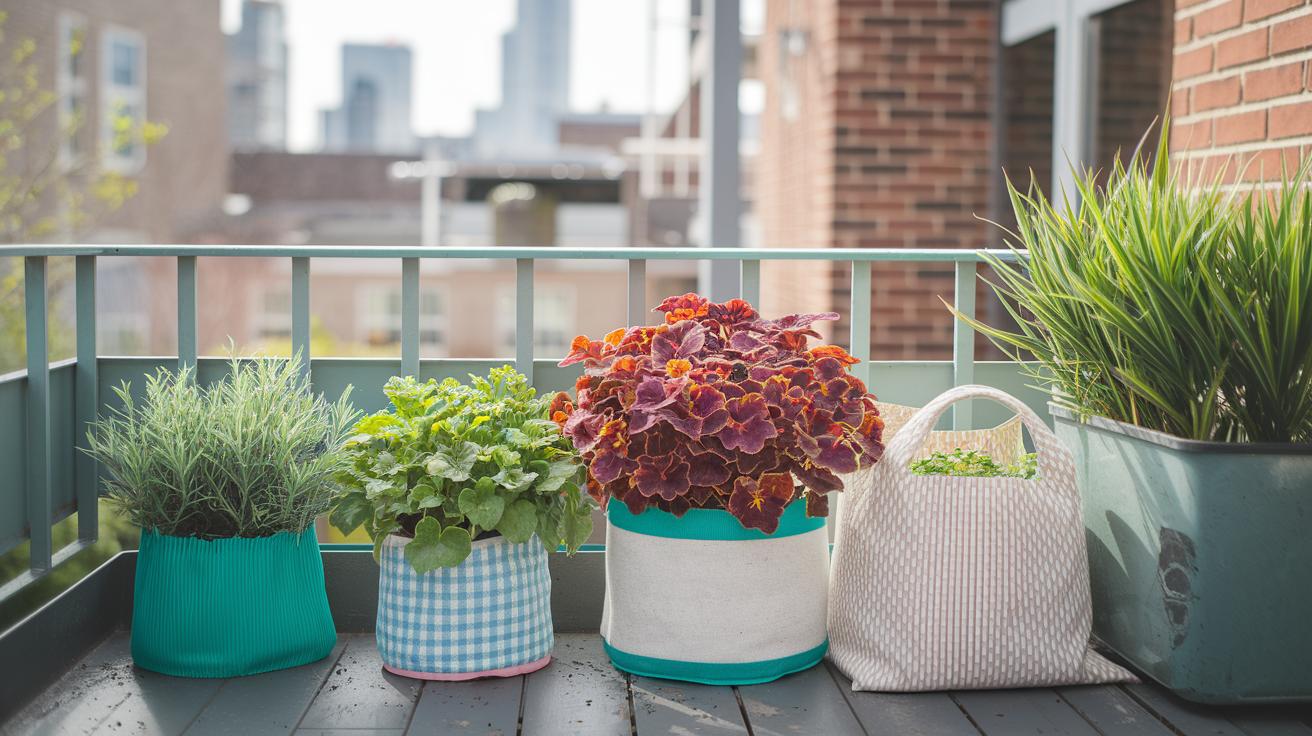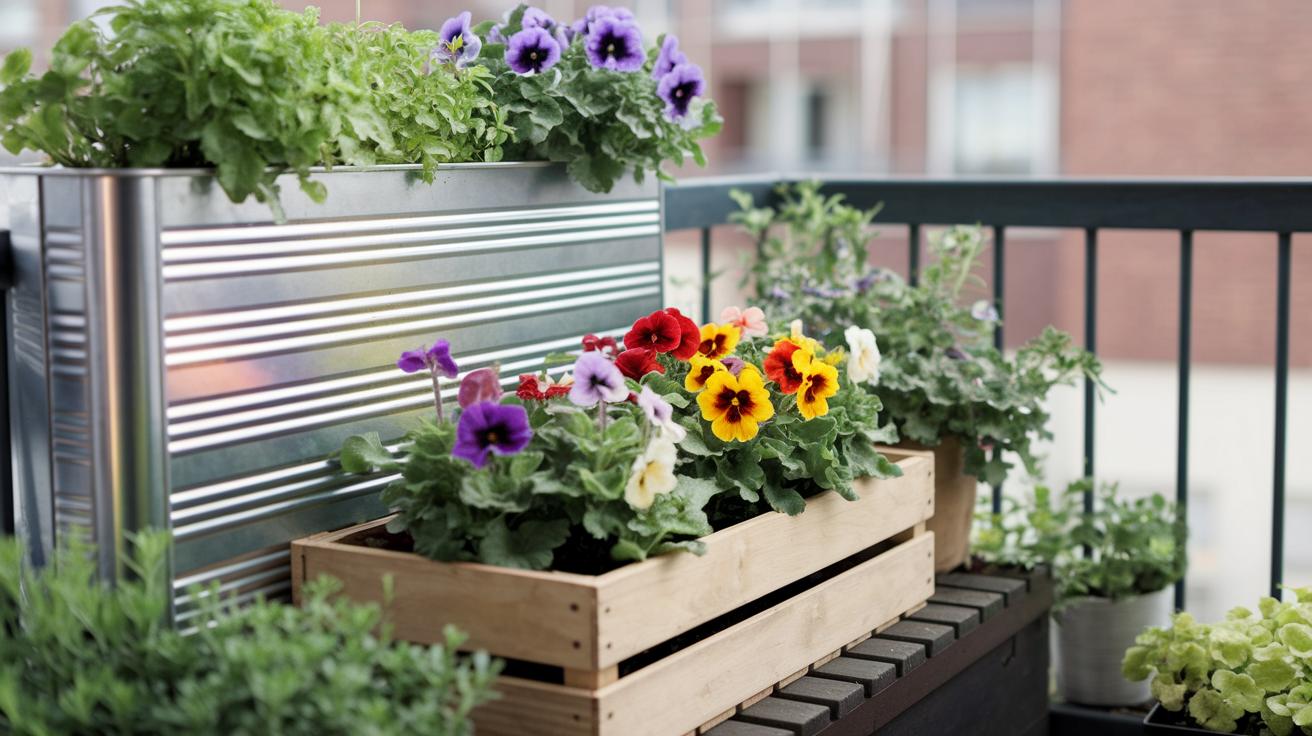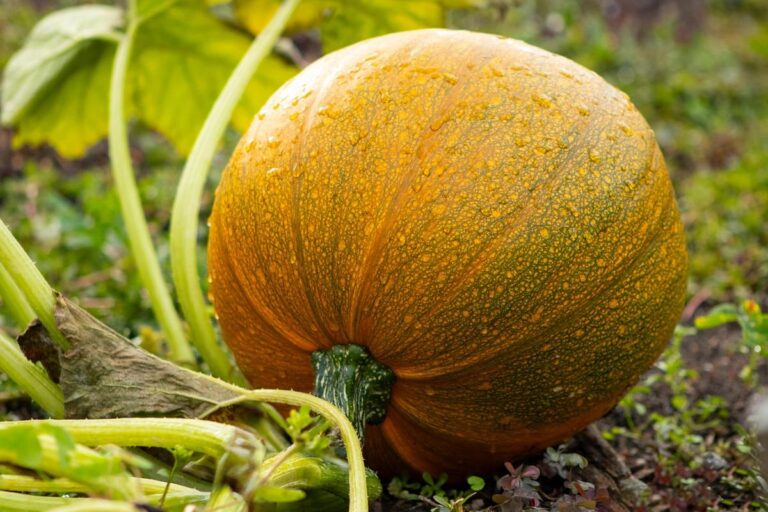Small Space Container Garden Design Ideas Are Stunning
Think you need a huge yard to grow a lush garden? Nope. Even a small balcony or concrete nook can bloom with soft leaves and bright blooms. Just round up a few containers (pots for soil and plants) and feel the warm earth under your fingertips. Before you know it, you’ll have a mini green hangout right outside your door.
Have you ever clipped slim planters (long, narrow pots) to a railing? It’s easy, and trailing vines can tumble over like a tiny waterfall. Or group pots of different heights, little plant towers, that give you leafy layers and pops of color. Treat each pot like a tile in a living mosaic and watch your space come alive.
Smart layout planning turns that tight corner into your own backyard oasis. Seriously, just a few square feet are all you need to escape into green calm.
Small Space Container Garden Design Ideas Are Stunning
- Corner cluster – gather pots (containers for plants) of different heights into one corner. It creates a cozy green nook where leaves seem to whisper.
- Rail planters – clip slim planters (pots or boxes) onto your balcony railing. You’ll love snipping fresh herbs and plucking ripe strawberries right at your fingertips.
- Patio grid – arrange containers in a neat grid across your patio or deck. Watering and care become a breeze when everything’s lined up.
- Windowsill shelf – pop a narrow shelf just under your window for tiny pots of microgreens (baby greens you can nibble) or chunky succulents.
- Layered zone – mix floor-level pots with a tiered stand or wall hooks. Layered greens add depth even in the tightest spots.
So layout planning is key in a small-space container garden. It helps you spot where light dips or water pools. And it means fewer trips moving heavy pots. With a clear plan, each plant lands in its perfect spot – sun lovers in bright corners, shade-friendly herbs tucked under shelves.
First, measure your space: length, width, depth, plus any fixed features like railings or door swings. Then sketch your light zones: full sun (sun all day), partial shade (some sun, some shade), and deep shade (hardly any sun). Jot down where morning sun hits and where afternoon shadow lingers. That simple map guides which pots and plants you choose.
By the way, I once mismeasured and had to shuffle pots at sunset. Oops.
On a 20-square-foot balcony, try the corner cluster plan. Tuck a three-tiered stand into one corner. Then line rail planters on the opposite railing for easy watering. I like to use lighter pots near the door so I can shift them if things get soggy. Plant sun-loving cherry tomatoes and basil in the southern corner. Shade-loving thyme and lettuce go under the shelf.
When you group plants by sun and water needs, daily checks feel like a quick stroll. You’ll end up with a lush, productive garden in a space you thought was too tight.
Selecting the Right Containers for Small Space Garden Designs

Have you ever felt the warm earth crumbling between your fingers? Pots come in all shapes and sizes. Think about how much space soil and roots need. I like pots that hold 1–5 gallons of soil and water. They give roots room while staying light enough to move easily.
Plastic pots feel light in your hands, and resin pots look sharp. They stand up to wind and rain. Slide them to catch morning sun or carry them into cool shade. They’re perfect for small balconies.
Function matters too. Self-watering pots (2–4 gallon containers with a built-in water reservoir (a small tank)) let you skip daily watering trips. Fabric grow bags (soft cloth containers that breathe and prune crowded roots) keep soil just damp enough and are awesome for carrots or small potatoes. Oops, I spilled a scoop of potting mix.
And if you’re up for a weekend craft, wooden crates or old pallets make fun planters for under $10. You get a charming, upcycled vibe and a story to tell.
| Container Type | Capacity (gal) | Material | Price Range | Benefits |
|---|---|---|---|---|
| Plastic Pot | 1–5 | Plastic | $5–$20 | Lightweight, durable |
| Resin Pot | 2–5 | Resin | $10–$30 | Weather-resistant |
| Self-Watering Pot | 2–4 | Plastic | $15–$40 | Consistent moisture |
| Fabric Grow Bag | 1–3 | Fabric | $5–$15 | Breathable, root-pruning |
| Wooden Crate | 3–5 | Wood | <$10 | Rustic, upcycled |
Matching plants to containers makes gardening a breeze. Herbs and lettuce thrive in shallow plastic or resin pots that sit right on railings. Tomatoes and peppers need deeper fabric grow bags or raised container beds (deep wooden boxes that help roots spread). Basil and spinach drink a lot, so self-watering pots are their best friends.
Have a soft spot for chipped paint and character? Pallet planters or upcycled crates make perfect homes for microgreens or strawberries. Every time you step outside, you’ll smile at your little garden.
Plant Selection for Small Space Container Gardens
Think of your little garden in three styles: trailing plants, upright growers, and bushy mounds. Trailing plants like succulents (fleshy water-storing plants) tumbling over pot edges add a soft, drippy look. Upright growers such as compact herbs, basil or rosemary, stand tall in skinny pots. And bushy types like thyme (a low-growing herb) form cute green pillows that fill empty spots. Mixing these shapes lets greenery peek into every corner.
Some spots soak up sun all day, ideal for sun-loving patio veggies such as cherry tomatoes or dwarf tomato plants. Those juicy bites need at least six hours of bright light to taste their best. In half-shaded corners, pick shade-tolerant friends like begonias or tender lettuce leaves. They’ll handle softer rays without getting scorched.
If your balcony sees only morning light, pair parsley with spinach. Both herbs do fine in mild sun, and that fresh scent at breakfast is a joy. By the way, my cat naps on that sunny ledge all morning, so cute.
And don’t forget color and texture. Team deep-green basil leaves with the silvery gray of dusty miller (a fuzzy foliage plant). Let pink petunia blooms spill over dark pots for pops of color. A feathery sprig of thyme next to glossy lettuce feels like a tiny secret garden. With a thoughtful mix, even a handful of containers will look lush all season.
Vertical, Hanging, and Tiered Space-Saving Solutions

Have you ever felt your balcony was just too flat? My trick is mixing different heights and layers. Hang pots on walls, hooks, and tiered racks to open more growing spots without squeezing your floor. And you can tuck sun lovers up high and shade pals down low for a cozy green corner.
Wall-Mounted Planters
I use sturdy anchors into the wall studs (wood beams inside your wall) with heavy-duty brackets that hold up to 15 pounds (about the weight of a small watermelon). Shallow trays or slim pots work best for herbs or succulents (plants that store water in their thick leaves). Drill slowly and measure twice. I like mine at eye level so watering and snipping feels easy.
Tiered Shelving & Multi-Level Stands
Pick metal or weatherproof wood shelves spaced 12 to 18 inches apart (about the height of a chair). That way taller veggies like tomatoes get room to grow without getting squashed. Always check the stand’s weight limit, some shelves only hold 20 pounds (9 kilos). Pots holding 1 to 5 gallons fit nicely. I like putting tomatoes on top and lettuce down below.
Hanging Brackets & Rail Systems
I use L-brackets, swivel arms, or rail-mounted hooks to hang clay or plastic pots. Leave at least 8 inches under each pot (about the length of your hand) so trailing ivies and ferns can spill over. Herbs in coco liners (baskets lined with coconut fiber that drains well) look so charming. Plus they free up floor space.
Pocket Planters & Fabric Towers
Sewn fabric pockets slip right onto a fence or railing. These pockets drain fast so I add a drip line or use a tower garden system for steady water. I love growing peppery microgreens and tiny strawberries that peek out of the pockets. Even baby greens pop up in no time.
Under-Stair & Corner Niches
Peek under your steps or in balcony corners for hidden spots. Check support beams before adding shelves or hooks so you don’t overload them. Low-light pals like ferns, moss, or baby spinach fit right into these snug nooks. Suddenly an empty corner turns into a little green hideaway.
- Wall-Mounted Planters: small footprint, costs $10 to $30, needs little care
- Tiered Shelving & Multi-Level Stands: medium footprint, costs $25 to $100, needs medium care
- Hanging Brackets & Rail Systems: small footprint, costs $15 to $40, needs little care
- Pocket Planters & Fabric Towers: small footprint, costs $20 to $60, needs medium care
- Under-Stair & Corner Niches: small footprint, costs $0 to $50, needs little care
| Method | Materials Needed | Pros | Ideal Plants |
|---|---|---|---|
| Wall-Mounted Planters | Anchors, brackets, trays | Frees floor space, easy to care for | Herbs, succulents |
| Tiered Shelving | Metal or wood shelves | Lots of tiers, sturdy setup | Tomatoes, lettuce |
| Hanging Brackets | Hooks, rail system | Good airflow, decorative | Ivy, ferns |
| Pocket Planters | Fabric pockets, drip line | Rows of plants, fast drainage | Microgreens, strawberries |
| Under-Stair Niches | Shelves, hooks | Hidden greenery | Ferns, baby spinach |
Step-by-Step Maintenance for Small Space Container Gardens
Every morning I wander out to my pots. I poke a finger about an inch into the soil (the fluffy earth around plant roots) to check moisture. If it feels dry at the top, you know it’s time to water. If it still feels a bit damp, leave it be. Group your containers by how much sun and water they need and you’ll spot thirsty pots right away.
Once a week I tip each pot to make sure the drainage holes (small openings that let water out) are clear. Then I pour out any water sitting in the saucers (shallow trays under pots) so the roots don’t sit in soggy soil and rot. A gentle shake shows if water flows freely. No clog means happy roots.
Efficient Watering and Drainage
- Drip irrigation strips (thin tubes with tiny holes) give a slow, steady drip so you don’t drown your plants.
- Self-watering wicks (fabric tubes that draw water up) keep the soil (loose earth around roots) evenly moist.
- For regular pots, aim for at least two drainage holes about one-quarter inch wide so extra water can run out.
Fertilization, Pruning, and Pest Management
Feed your containers every four to six weeks with a balanced liquid fertilizer (equal parts nitrogen, phosphorus, and potassium). Snip off leggy shoots on herbs and any limp leaves on veggies, regular pruning (cutting off old growth) keeps plants bushy and productive. Peek under the leaves for tiny green aphids or slimy slugs. A drop of neem oil (plant-safe pest treatment) or a strong spray of water can send them packing.
By the way, my cat loves to sun herself on the pot rims. Back to keeping your mini-garden happy.
In hot weather water in the morning while it’s cool. Then move pots into dappled shade at midday so they don’t fry. When nights get chilly, push pots close to a wall or tuck them under the eaves for extra warmth. And if your indoor air feels dry, give leaves a light mist now and then so they don’t get stressed.
Budget-Friendly DIY Planters for Small Space Container Gardens

I love turning an old wooden crate into a snug little garden box. The warm wood crumbles quietly under your fingers as you tuck in soil and roots. Just grab a sturdy crate, line it with plastic (a thin sheet that stops soil from leaking), and give it a coat of outdoor paint. I once scored a free crate from the curb, spent $2 on a liner, $3 on paint, and $1 on screws for a total under $10.
And those empty tin cans? They make perfect little herb pots. Clean eight cans, drill drainage holes (small openings that let extra water run out), and nail or hook them onto a thin plank or pallet slat. You’ll pay about $2 for the wood piece and under $1 for nails or hooks, so this project stays under $5. Thyme, basil, or mint look so charming lined up like that.
For a longer planter, build a pallet trough. Pull three strong slats from a wood pallet, nail side pieces on, and line it with landscape fabric (garden cloth that blocks weeds but lets water through). Fill it with potting mix (a special soil blend made for containers) and you’ve got space for lettuce, strawberries, or dwarf tomatoes. If you source fabric scraps, this project stays under $10 and fits right along a railing or ledge.
Pair these DIY planters with the best container plants for urban balconies for a bright mix of herbs, veggies, and blooms that thrive in small spots.
Final Words
In the action of laying out your corner clusters, rail planters, grids, and mixed zones, you’ve learned five compact templates.
You’ve seen how choosing the right 1–5 gallon pots, mixing upright and trailing plants, and stacking shelves saves space and energy.
Next, we walked through vertical tricks, simple upkeep steps, and wallet-friendly DIY planters that keep your balcony thriving.
With these small space container garden design ideas, you’re ready to grow fresh greens with minimal fuss and plenty of joy.
FAQ
What are some effective layout ideas for small-space container gardens?
The article suggests five compact layouts: corner clusters, rail planters, patio grids, windowsill shelves, and mixed horizontal-vertical zones for maximizing greenery in tiny outdoor spots.
How do I choose the best containers for a compact garden?
Choosing the best containers for a compact garden means picking 1–5 gallon pots in plastic, resin, or fabric bags for easy moving, lightweight design, and healthy root space.
Which plants work well in small containers on balconies?
Plants that work well in small balcony containers include trailing petunias, upright basil, bushy thyme, cherry tomatoes, and compact herbs that suit full sun or partial shade zones.
How can I save space using vertical gardening?
Vertical gardening saves space by using wall-mounted planters, tiered shelves, hanging brackets, pocket planters, and fabric towers to stack herbs, succulents, and strawberries in multi-level setups.
How should I water and maintain small container gardens?
You water and maintain small containers by grouping pots by water and light needs, checking soil moisture daily, clearing extra water from saucers, fertilizing every four to six weeks, and pruning for fresh growth.
What are budget-friendly DIY planter options for tight spaces?
Budget-friendly DIY planters for tight spots include wooden crate boxes, tin-can herb walls, and pallet troughs painted light colors or lined with reflective surfaces to boost plant light.
How do I assess my balcony’s usable gardening space?
You assess balcony space by measuring length, width, and mapping sun and shade zones. Then match container layouts and plant types to that 20 square foot area for optimal growth.







